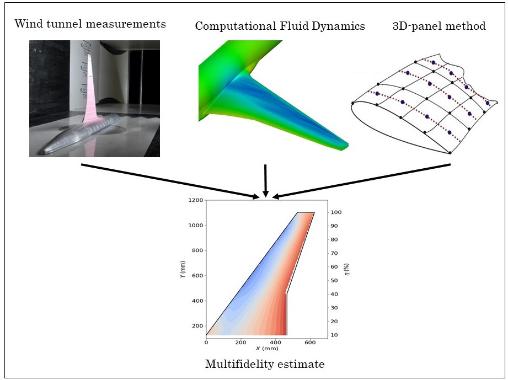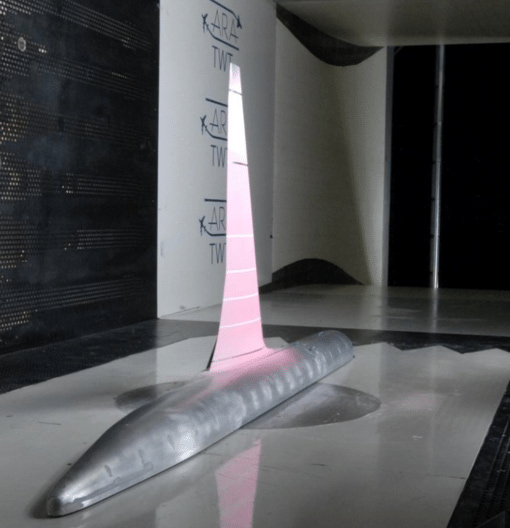Using machine learning to help design the next-generation of aircraft
Mehdi Anhichem - A case study of data fusion for aerodynamic design
My supervisors and I recently published a journal paper on data fusion of aerodynamic data. In the context of aircraft design, aerodynamic data are essential for every stage of the design process. They inform decisions about wing and fuselage shapes, engine placement, control surface design, and overall aircraft configuration. Accurate aerodynamic data are foundational to designing aircraft that meet performance, efficiency, safety, and regulatory requirements. In the early stages of aeronautics, attempts to mimic the movements of birds with flying machines proved unsuccessful. Engineers came to the realisation in the early 19th century that a deeper understanding of airflow around aircraft was imperative for progress. The study of aerodynamics is crucial in aircraft development programmes. There are two methods for it: one use experimental setups, the other use computers. First, to study the aerodynamic forces and the flow of air over an aircraft surface, we place a scaled model in instrumented laboratories called wind tunnel in which the design is tested experimentally under controlled conditions. Then, since the 80’s, helped by the emergence and growth of computing capabilities, computational aerodynamics became a valuable option. It uses physical modelling and numerical methods to compute the aerodynamic forces on a plane. Wind tunnel testing is typically used to validate CFD simulations while also informing the aircraft design iterations. At later stages, flight testing gives aerodynamic data in a real-world environment with such tests conducted on prototypes of the aircraft. The data is used to validate the predictions and to inform any necessary adjustments. Flight tests also provide an opportunity to assess the aircraft's handling qualities and performance characteristics, including stability and control, propulsion and systems integration. While flight and wind tunnel testing are considered to be the most accurate sources of aerodynamic data, they also come with their own inherent shortcomings, such as measurement errors, instrumentation uncertainty, model-to-model variability and flow disturbances associated with the tunnel environment, as well as a high cost and logistic constraints. Similarly, the quality of CFD data depends on the details of the geometry used in the simulation, the choice of numerical methods and the reliability of the simulation parameters. To obtain a reliable and safe airplane design, it is necessary to study a large range of scenarios, in other words, a large range of flight conditions. However, all methods can be expensive and are subject to multiple uncertainties and errors. Thus, there is a significant challenge to leverage information from the different aerodynamic data sources while controlling the definition and propagation of uncertainty towards the decision-making level.
The research I am conducting uses machine learning to propose data-driven solutions. Machine learning offers powerful tools to approximate the relationship between inputs and output, in my case, between flight conditions and design objective. My focus is on the fusion of data from experimental and numerical methods. The idea is to bring together the strengths and to mitigate limitations of data from the various sources. Each data source is represented by a machine learning model. After that, for each data source, I quantify its uncertainty. It comes from expert opinion, from past experiences or from the literature. I have different data sources, modelled by machine learning algorithms, with a quantified uncertainty for each. They are then all fused so that the resulting model benefits from all the available information and outputs an uncertainty that gives us the confidence we can have in the final value. The paper demonstrates an effort to quantify the physical uncertainty associated with each data source before undertaking multifidelity data fusion on the pressure distribution of a test case representative of a commercial aircraft.
As we strive to curb climate change, the aviation sector faces a pressing need to reduce its environmental footprint. However, transitioning to more sustainable practices in aviation isn't something that happens overnight. It requires a shift in how aircraft are designed and operated, and this transition takes time. The goal is to reach net zero carbon emissions by 2050, but to get there, we need innovative solutions that balance performance with sustainability. This work aims to offer fresh approaches for aircraft manufacturers. By getting the best out of the produced data, these new tools will help them create planes that meet strict performance standards while also aligning with the aviation industry's ambitious sustainability goals. By embracing these innovations, aircraft manufacturers can play a crucial role in reducing the environmental impact of air travel. It's about finding ways to fly that are both efficient and eco-friendly, ensuring that future generations can continue to enjoy the benefits of air travel without harming the planet.
If you are interested in more technical details from this work, a preprint of this paper is available here. I would now like to thank the co-authors of this paper (Sebastian Timme, Jony Castagna, Andy Peace and Moira Maina), but also the co-sponsors of this work: the University of Liverpool, the Distributed Algorithms CDT and the Aircraft Research Association Ltd.

Multi_methodology: sketch describing the method applied in the paper. (image credit ARA)

model_wtt: wind tunnel model investigated to produce the experimental data.

digital_twin (Image credit: DLR): representation of a digitial twin for aircraft design.
Keywords: aerodynamic, machine learning, data fusion, uncertainty quantification